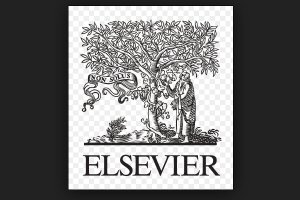Steven B. Krivit LENR Review Published by Elsevier

Nov. 5, 2013 – By Steven B. Krivit –
I am pleased to report that Elsevier has just published my most current and comprehensive technical review of LENRs in its Reference Database of Chemistry, Molecular Sciences and Engineering.
The 56-page, 94-image report, “Review of Low-Energy Nuclear Reactions,” provides a broad tutorial on all the primary aspects of the field. This review supersedes all of my previous technical reviews and encyclopedia chapters, including the previous Elsevier and Wiley and Sons chapters. It is available for sale here for $31.50.
Cite as: Krivit, Steven. B., “ENERGY: Review of Low-Energy Nuclear Reactions,” Reference Module in Chemistry, Molecular Sciences and Chemical Engineering, Reedijk, Jan (Ed.), Elsevier, Waltham, MA, ISBN: 978-0-12-409547-2, doi:10.1016/B978-0-12-409547-2.01193-8. (Sept. 23, 2013)
[DAP errMsgTemplate=”” isLoggedIn=”N”]
Login or Subscribe to remove this notice
Professional Journalism – LENR Facts
Original online content only at New Energy Times
[/DAP]
[DAP errMsgTemplate=”” isLoggedIn=”N”]
_____ Article continues for subscribers. Click here to subscribe. _____
[/DAP]
[DAP errMsgTemplate=”” isLoggedIn=”Y”]
Excerpt (Introduction):
Low-energy nuclear reactions (LENRs) are a set of phenomena that take place under specific conditions on the surfaces of metals in the presence of hydrogen or its isotope, deuterium. The experimental research typically takes place at or close to room temperature and standard pressure and produces a variety of nuclear products, effects and nuclear-scale heat. Perhaps the most extraordinary characteristics of these phenomena are that they do not emit strong fluxes of prompt radiation and that the products are generally stable isotopes. For these reasons, LENRs represent a previously unrecognized class of nuclear reactions. The difference between LENRs and nuclear fusion or nuclear fission stems from the fact that they are based primarily on weak interactions rather than the strong force.
The word “low” in “low-energy nuclear reactions” refers to the input energies that go into the reactions; the output energies may be low or high. The term was chosen by its researchers to distinguish it from the field of high-energy physics, which uses very high temperatures or input energies to create nuclear reactions. Researchers also use the term “condensed-matter nuclear science” when they refer to the field of LENR research.
This article provides a broad technical overview of the LENRs in CMNS. It discusses direct evidence of nuclear phenomena, including isotopic shifts, neutrons, tritium and charged particles. These anomalies suggest untold potential for new technologies, including the transmutation of radioactive waste from nuclear fission reactors into stable isotopes, as well as processes that may provide direct heating or heat to generate electricity. The research also suggests the possibility of the production of rare metals, such as platinum, from abundant metals, such as tungsten and nickel.
The observation of excess heat production – at thousands of times greater power and energy densities than any chemical reaction or solar energy – suggests the extraordinary possibility of a new source of clean nuclear energy based on abundant and globally available raw materials.
LENR experiments are undoubtedly complex, and researchers perform them with a variety of configurations. The inputs – that is, potential reactants – may include (but are not limited to) deuterium in heavy water, deuterium gas, hydrogen in normal water, hydrogen gas, lithium, carbon, platinum, palladium, titanium, nickel, aluminum and tungsten. No radioactive reactants are required, and in general, no radioactive products result.
The field is in its third decade. Throughout the history of this field, would-be entrepreneurs have stated that they have or will soon have practical devices based on LENRs. All of those claims have been premature. Although researchers have learned a lot, the field is still primarily a scientific exploration. The research shows a new field of science that bridges the disciplines of chemistry and physics. Ideally, world-changing technologies will eventually evolve from this field. When that will happen is difficult to predict.
Questions? Comments? Submit a Letter to the Editor.

